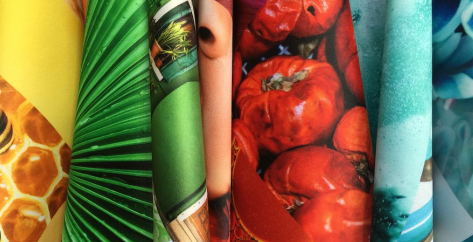
Choosing the Best Dye Sublimation Paper
Dye sublimation printing has gained immense popularity due to its ability to produce high-quality, vibrant images. This process involves transferring dye onto fabric, paper, or plastic through heat and pressure. The versatility of this technique makes it perfect for numerous applications, including custom apparel and personalised home decor.
One critical component of this process is the dye sublimation paper. Selecting the right paper can significantly impact the quality and durability of your prints. Examine the key factors to consider when choosing the most suitable sublimation paper for your requirements.
Types of Sublimation Paper
The market offers various sublimation papers, each designed to meet particular requirements. The most common types include standard, high-release, and sticky or tacky sublimation. Standard is suitable for general purposes and balances cost and quality. High-release is ideal for detailed prints and transfers more dye, producing more vibrant images. Sticky sublimation is used for textiles as it prevents them from moving during the transfer process, ensuring precise and accurate prints.
Paper Weight and Thickness
The weight and thickness of the sublimation document play a crucial role in the printing process. Thicker paper (higher gsm) is generally more durable and can handle more dye, making it suitable for large, intricate designs. However, transferring the dye effectively might require more heat and pressure. On the other hand, thinner paper is easier to handle and transfers dye more quickly but may not produce as vivid results as thicker paper. Choosing the right weight and thickness depends on your specific printing requirements and material.
Coating Quality and Consistency
The quality and consistency of the paper’s coating are vital for achieving high-quality prints. A good coating ensures the dye is evenly distributed and prevents blotches or streaks on the final print. When selecting dye sublimation paper, look for brands known for consistent and high-quality coatings. This guarantees consistent and dependable results with every print. Inconsistent coatings can lead to wastage and unsatisfactory prints, affecting production efficiency and cost.
Compatibility with Printers and Inks
Not all papers are compatible with every printer and ink. Choosing the one that works well with your specific printer model and the dye sublimation inks you are using is essential. Manufacturers often provide compatibility information, so check these details before purchasing. Utilising incompatible ones can result in subpar print quality, paper jams, and potential damage to your printer. Ensuring compatibility will help you achieve the best possible results and extend the lifespan of your equipment.
Cost-Effectiveness and Budget
While choosing high-quality products is essential, considering your budget is equally crucial. High-quality ones often come at a higher price, but they can save you money in the long run by reducing waste and reprints. However, if you are working on a tight budget, cost-effective, decent-quality options are available. Finding the right balance between cost and quality is essential when selecting the best choice. To maximise your budget without compromising quality, consider purchasing in bulk or taking advantage of discounts.
Environmental Considerations
As the printing industry becomes more environmentally conscious, it’s essential to consider the environmental impact of your paper. Look for documents that are eco-friendly and made from sustainable sources. Some manufacturers offer products that are recyclable or biodegradable, reducing their impact on the environment. Choosing environmentally friendly options allows you to support sustainability efforts while maintaining high-quality print results.
Dye sublimation paper is widely used in various industries to produce high-quality, vibrant prints. It is an essential component in the printing process, where it serves as the medium that transfers dye onto a range of materials, including fabrics, ceramics, metals, and plastics. The paper is specially coated to hold and release dye when exposed to heat and pressure, ensuring accurate and vivid colour reproduction.






